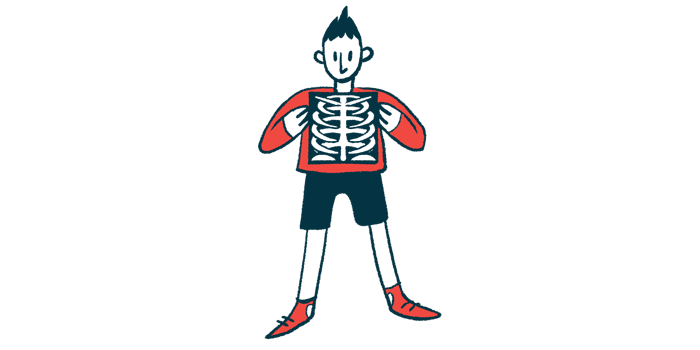Bone health is impaired in SMA children, but treatment may help
Treatment with Spinraza lowered reductions in a marker of bone formation

Children with spinal muscular atrophy (SMA) generally have poor bone health, including low bone mineral density and reduced bone formation and remodeling, a study indicates.
The effect on bone health is more pronounced in children with worse motor function, but as treatment with Spinraza (nusinersen) improved motor function in most patients, their bone density also increased. That’s according to “Low bone mineral density and reduced bone-specific alkaline phosphatase in 5q spinal muscular atrophy type 2 and type 3: A 2-year prospective study of bone health,” which was published in Acta Paediatrica.
SMA is a genetic condition that features progressive muscle weakness and atrophy. It’s caused by mutations in the SMN1 gene that lead to insufficient levels of the SMN protein, or its abnormal function.
Generally, weight-bearing activities such as running, climbing stairs, dancing, or doing sports are critical for developing bones. But people with SMA tend to be less active, so bone problems are a common complication.
Motor function and bone development in SMA
Bone remodeling is critical for normal bone development and health, and involves the resorption of old or damaged bone tissue, followed by the formation of new bone. But few studies have examined bone remodeling in SMA patients, said researchers in Sweden who assessed bone measures and motor outcomes in 11 children with SMA type 2 and nine with type 3 at a children’s hospital between 2016 and 2019.
The children’s mean age at the start of the study (baseline) was 9.1, and the mean age at the last follow-up was 10.5. There were six patients with type 3 disease who were able to walk, the rest used a wheelchair full time. Five patients had had bone fractures before entering the study.
None of the children had received treatment until Spinraza was approved in the country. After that, 10 patients started it and received it for up to 23 months.
Initial bone measurements taken at the first assessment showed all the patients had low bone mineral density (BMD), a measure of how dense and resistant to fractures bones are.
The density was much lower than healthy people of the same age and sex in two distinct assessments — one that looked at the entire body except the head and one that examined the left hip bone alone.
Spinraza’s effect on bone formation
A higher number of Spinraza-treated patients saw motor function improvements after starting treatment (80% vs. 22% of untreated patients), and improvements in bone mineral density were more common in this group (44% vs. 29%). The differences were not statistically significant, however.
To monitor bone remodeling, researchers looked at two bone markers — BALP and CTX — to measure bone formation and resorption, respectively. The data suggested SMA patients had normal levels of bone resorption, but bone formation was significantly lower than healthy children of the same age and sex.
Over time, the patients had significant reductions in their BALP levels, indicating a greater impact on bone formation, but Spinraza treatment tended to lower their decline.
“In conclusion, this study suggests that bone health, measured as BMD, is poor in patients with SMA but higher BMD is seen in children with better motor function,” wrote the researchers, who noted that the small number of patients and their variable age and treatment duration limited the study. Measuring bone mineral density in children is also challenging, particularly in those with spine and hip problems, they said.








